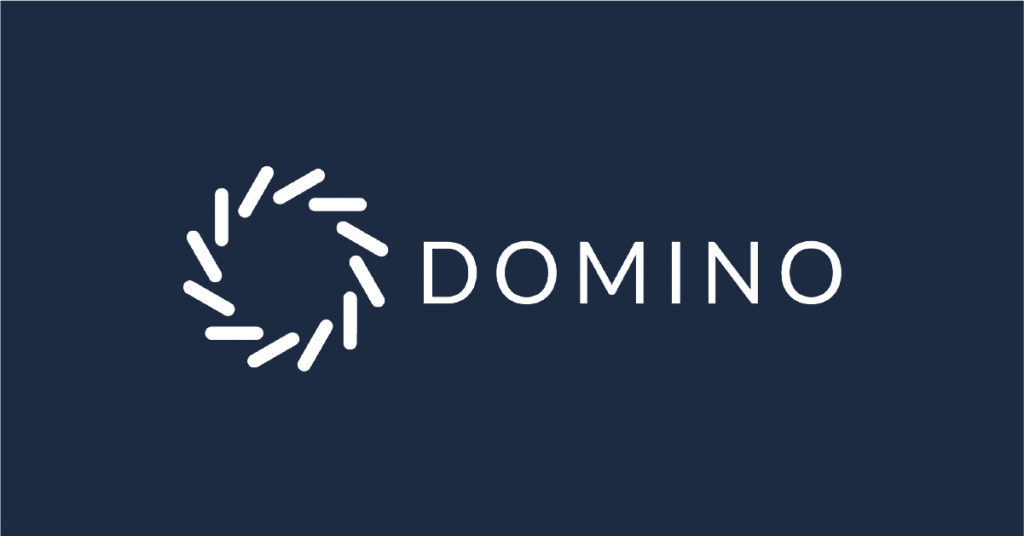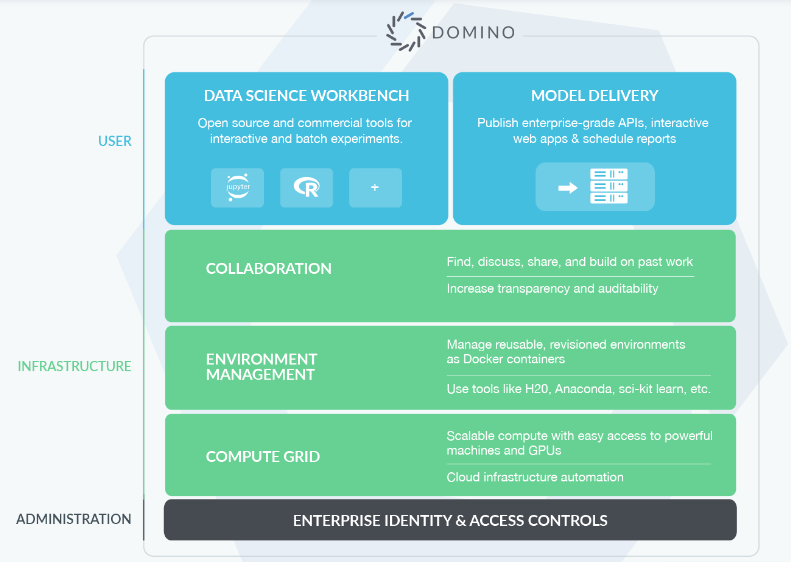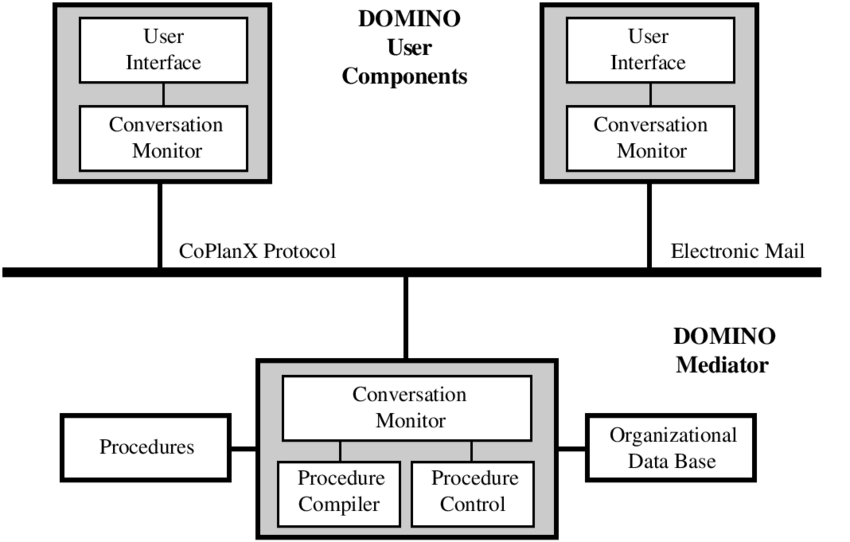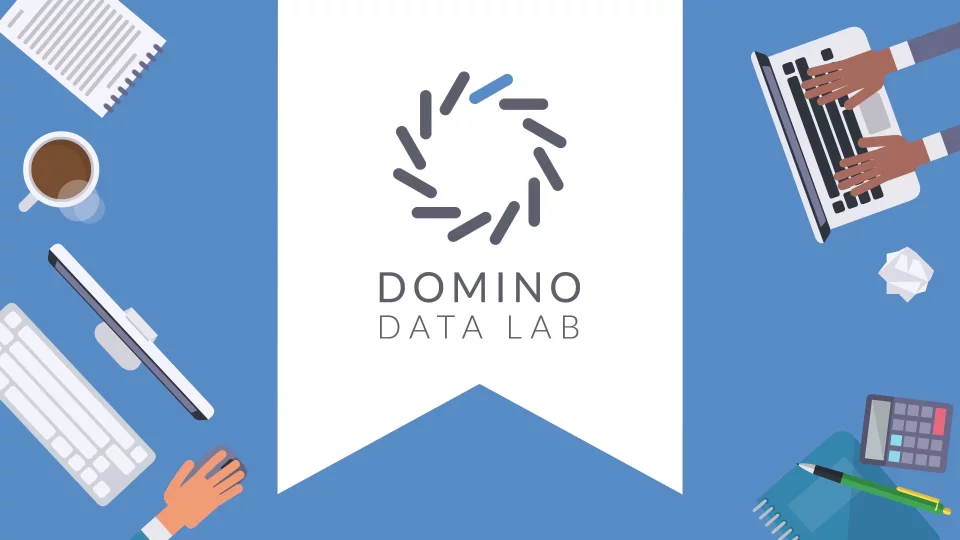What is Domino Data Lab?

Domino Data Lab is a platform designed to help data science teams collaborate, develop, and deploy models and applications more effectively. It provides tools for managing the end-to-end data science lifecycle, from data exploration and model development to deployment and monitoring. Domino focuses on enabling data science teams to work together, iterate quickly, and maintain the reproducibility and transparency of their work.
Here are the top 10 use cases of Domino Data Lab:
- Collaborative Model Development: Domino enables data scientists to collaborate on projects by sharing code, data, and analyses. This fosters teamwork, reduces silos, and promotes knowledge sharing.
- Reproducibility and Version Control: Domino ensures that data science projects are reproducible by tracking code, data, and environment changes. This is crucial for maintaining transparency and auditability.
- Experimentation and Iteration: Data scientists can experiment with various algorithms, parameters, and approaches. Domino allows them to iterate quickly and track the results of different experiments.
- Model Deployment: Domino supports the deployment of models to various environments, such as cloud services or on-premises servers. This facilitates the transition from experimentation to production.
- Automated Model Deployment and Monitoring: Domino provides tools to automate the deployment process, making it easier to put models into production. It also offers monitoring features to track model performance over time.
- Data Exploration and Visualization: Data scientists can use Domino for data exploration, visualization, and analysis. It supports various visualization libraries and tools to communicate insights effectively.
- Data Preparation: Domino allows users to prepare and clean data within the platform, streamlining the data preprocessing stage of the data science pipeline.
- Collaboration Across Teams: Beyond data scientists, Domino also enables collaboration between data science teams and other stakeholders, such as business analysts and IT professionals.
- Resource Management: Domino optimizes resource allocation for running experiments and training models, ensuring efficient use of computing resources.
- Custom Workflows and Automation: Domino’s flexible architecture allows teams to design custom workflows that suit their specific needs. This includes integrating with existing tools and systems.
It’s worth noting that while these use cases provide a comprehensive overview, Domino Data Lab’s features can be tailored to fit the unique requirements of different organizations and industries. The platform’s emphasis on collaboration, reproducibility, and automation makes it a valuable asset for modern data science teams working on complex projects.
What are the feature of Domino Data Lab?

Domino Data Lab provides a range of features to support collaborative and efficient data science workflows. These features cover various aspects of the data science lifecycle, from data exploration and model development to deployment and monitoring. Here are some key features of Domino Data Lab:
- Collaborative Workspace: Domino offers a shared environment where data scientists can collaborate on projects. They can access code, data, and analyses created by other team members, promoting knowledge sharing.
- Reproducibility: Domino ensures that experiments and analyses are reproducible by tracking code, data, and environment settings used in each project. This helps in maintaining transparency and auditability.
- Version Control: The platform integrates with version control systems like Git, allowing data scientists to manage code changes, collaborate effectively, and keep track of project history.
- Experiment Tracking: Domino tracks and logs experiments, capturing metadata like parameters, metrics, and visualizations. This makes it easier to compare different approaches and learn from past work.
- Model Deployment: Domino facilitates deploying models as APIs or batch jobs to various environments, including cloud providers and on-premises infrastructure.
- Automated Deployment and Monitoring: Data scientists can automate the deployment of models using predefined schedules or event triggers. The platform also provides monitoring tools to track model performance in real-world scenarios.
- Data Exploration and Visualization: Domino supports various data exploration and visualization tools, helping data scientists gain insights from the data they work with.
- Integrated Development Environments (IDEs): Data scientists can use their preferred programming languages and IDEs within Domino, creating a familiar environment for coding and analysis.
- Resource Management: The platform optimizes resource allocation for computational tasks, ensuring that experiments and model training use resources efficiently.
- Custom Workflows: Domino’s architecture allows users to design custom workflows and automate tasks using APIs and integrations with other tools.
How Domino Data Lab works and Architecture?

Domino Data Lab’s architecture is designed to provide a collaborative, scalable, and secure environment for data science teams. The architecture can be divided into several components:
- Web Interface: The web interface is where users interact with the platform. They can create and manage projects, access data and code, and collaborate with team members.
- Collaboration Layer: This layer enables multiple data scientists to work together on shared projects. It includes features for version control, experiment tracking, and collaborative coding.
- Execution Environment: Domino provides scalable execution environments for running code, experiments, and model training. It favors a variety of programming tools and languages.
- Model Deployment: Domino’s deployment components allow users to deploy models as APIs or batch jobs. This includes monitoring and scaling capabilities.
- Data and Storage Integration: Domino integrates with various data sources and storage solutions, allowing users to access and analyze their data.
- Security and Access Control: Security features ensure that data and projects are protected. Access control mechanisms determine who can view, edit, and run experiments.
- Resource Management: This component optimizes the allocation of computing resources to various tasks, ensuring efficient use of infrastructure.
- Automation and Integration: Domino supports automation through APIs and integrations with CI/CD pipelines, enabling seamless integration with existing workflows.
Domino’s architecture is built to accommodate the diverse needs of data science teams, from collaboration and experimentation to deployment and monitoring, all within a secure and controlled environment.
How to Install Domino Data Lab?
There are two ways to install Domino Data Lab:
- On-Premise
To install Domino Data Lab on-premise, you will need to download the installer from the Domino website. The installer will assist you through the installation activity.
- Cloud
To install Domino Data Lab on the cloud, you will need to create an account with a cloud provider, such as AWS, Azure, or Google Cloud Platform. Once you have created an account, you can deploy Domino Data Lab to your cloud environment.
Here are the detailed steps on how to install Domino Data Lab on different operating systems:
On-Premise
- Download the Domino Data Lab installer for your operating system from the Domino website.
- Run the installer and follow the given instructions over the live screen.
- Create a Domino Data Lab account and log in to Domino Data Lab.
- Configure Domino Data Lab by setting up your workspace and connecting to your data sources.
- Start using Domino Data Lab.
Cloud
- Create an account with a cloud provider, such as AWS, Azure, or Google Cloud Platform.
- Go to the Domino Data Lab website and click on the “Deploy to Cloud” button.
- Select the cloud provider that you want to deploy Domino Data Lab to.
- Follow the on-screen instructions to deploy Domino Data Lab.
- Create a Domino Data Lab account and log in to Domino Data Lab.
- Configure Domino Data Lab by setting up your workspace and connecting to your data sources.
- Start using Domino Data Lab.
Basic Tutorials of Domino Data Lab: Getting Started

The following steps are the basic tutorials of Domino Data Lab:
- Create a Domino Data Lab account
The first step is to create a Domino Data Lab account. You can do this by going to the Domino Data Lab website and clicking on the “Sign up” button.
- Explore the Domino Data Lab website
Once you have created a Domino Data Lab account, you can explore the website. You can find a variety of resources on the website, including documentation, tutorials, and community forums.
- Create a workspace
A workspace is a container for your data, models, and code. You can create a workspace by clicking on the “Create Workspace” button in the Domino Data Lab interface.
- Import data into your workspace
Once you have created a workspace, you need to import data into it. You can import data from a variety of sources, such as CSV files, databases, and cloud storage.
- Explore your data
Once you have imported data into your workspace, you can explore it. You can use Domino Data Lab’s built-in data exploration tools to visualize your data, create summary statistics, and perform hypothesis tests.
- Build a machine learning model
Once you have explored your data, you can build a machine learning model. Domino Data Lab provides a variety of machine learning algorithms that you can use, such as linear regression, logistic regression, and decision trees.
- Deploy your model
Once you have built a machine learning model, you can deploy it. Deployment means making the model available to users so that they can use it to make predictions. Domino Data Lab provides a variety of ways to deploy models, such as as a REST API, a web application, or a mobile app.
- Monitor your model
Once you have deployed your model, you need to monitor it. This means tracking the performance of the model and identifying any issues. Domino Data Lab provides a variety of tools for monitoring models, such as KPI dashboards and alerts.
- Improve your model
Over time, you may need to improve your model. This can be done by retraining the model on new data or by adjusting the model’s parameters. Domino Data Lab provides a variety of tools for improving models, such as a model comparison tool and a model tuning tool.
- Share your work
Once you have built a model, you can share it with others. You can share your model by publishing it to a Domino Data Lab library or by exporting it to a file.

👤 About the Author
Ashwani is passionate about DevOps, DevSecOps, SRE, MLOps, and AiOps, with a strong drive to simplify and scale modern IT operations. Through continuous learning and sharing, Ashwani helps organizations and engineers adopt best practices for automation, security, reliability, and AI-driven operations.
🌐 Connect & Follow:
- Website: WizBrand.com
- Facebook: facebook.com/DevOpsSchool
- X (Twitter): x.com/DevOpsSchools
- LinkedIn: linkedin.com/company/devopsschool
- YouTube: youtube.com/@TheDevOpsSchool
- Instagram: instagram.com/devopsschool
- Quora: devopsschool.quora.com
- Email– contact@devopsschool.com

